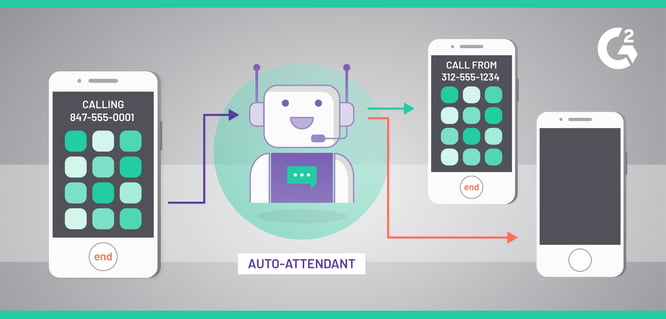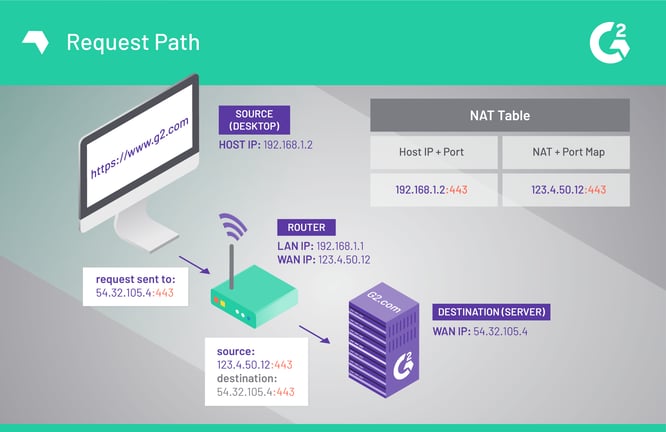What Service Should I Use Ofr Port Forwarding
For most people, networking is a circuitous, nuanced knowledge space; the only thing more abundant than the general land of confusion is the sheer volume of acronyms.
It'southward not an easy topic to understand, and bluntly, there's then much going on within that space that information technology's hard to have in-depth cognition without decades of study and experience.
We don't all have that kind of time on our hands. What we need is a simpler way to empathise the basics and hands visualize a concept then that we tin better understand networking impacts. We're here to help you with that. Specifically, allow's explore the concept of port forwarding, check out some applications, and hopefully, by the end of the journey, you'll feel a merely petty more comfortable with this acronym fiesta of a concept.
TIP: Learn how port forwarding and backup software tin work together for you lot to access your files and data from any network-connected device.

What is port forwarding?
Earlier we swoop also deep, let's ascertain information technology.
Port forwarding defined
Port forwarding, sometimes called port mapping, allows computers or services in private networks to connect over the net with other public or private computers or services.
Port forwarding achieves by creating an clan called a map between a router'southward public, wide area network (WAN) internet protocol (IP) address and a individual, local area network (LAN) IP address for a device on that private network.
The mouthful of acronyms is a little confusing, so let's give ourselves a simpler frame of reference.
The video above from Issac's Computing Tips does a great job of explaining port forwarding and mapping.
Your cyberspace'southward port forwarding auto-attendant
Remember of the router for your private network like a switchboard, or, maybe a picayune more up to today's speed, an machine-attendant. The voice you lot hear when you call somewhere that gives you options for whom to speak with...
- "Press nothing to speak to a representative."
- "If y'all know your party'southward extension, please enter it now."
...that's an auto-attendant.

When a call comes into the auto-attendant, it has to exist redirected. The auto-attendant uses your input, the extension, as an identifier to aid redirect the call to the right target. Once that extension is received, the phone call is passed through to that extension'south phone.
Likewise, if you want to place an outbound call from inside the switchboard network to a different number, the switchboard can display your internal phone number every bit the main switch'south phone number instead. This is chosen an external phone number mask and is used to protect the internal telephone number and extension from being shared. Subsequently the internal number is masked, the phone call goes out, and the receiver sees just the switchboard number.

Port forwarding, explained
A "private LAN" could be your abode Wi-Fi, your office Wi-Fi, or fifty-fifty the free Wi-Fi at a coffee shop. It typically (but not always) requires a password or some course of authentication to connect. Once connected, your device — laptop, cell phone, tablet, etc. — is assigned an IP address on that network through a procedure chosen DHCP (Dynamic Host Configuration Protocol). That IP address is unique to your device on the network, which is of import for the router in identifying the device.
When you'd like to connect to the internet — say, to bank check your electronic mail, visit social media, or access cloud file storage — a connectedness request gets sent from your device to the router, detailing your device's IP accost and an associated port for the asking. Your device is the host or source for the connection. The router then reads the request and masks (maps) your device'south IP address and port with the router's public-facing IP address and a relevant port. (If you're specially curious, here'south the full ICANN port registration listing.) Afterwards masking your host IP accost with the router's public-facing IP address, it sends the connexion request forward to its destination.
There'southward an important detail involved in sending that connexion request: The router has to remember how it mapped your device's IP address and port to its ain. This is where a Network Accost Translation (NAT) table comes into play. NAT tables store information about what maps are made during a connection.

Once a request reaches its destination, that destination is going to need to send information back to your device so you can see it. The destination makes a connection request back to the router with the router'south IP accost and a specified port. The router checks the NAT tabular array for the specific IP address/port combination to see if there'due south an open connection. If in that location is, the request is so passed along to the right device on the internal network. Once that connectedness closes, the connection's entry on the table is deleted.

Why is port forwarding of import?
Port forwarding is critical for remote admission to items on private networks. Since firewalls exist to keep unwanted visitors out, the visitors you want to make it are going to demand a way to exercise so. Knowing the IP address isn't enough: Requests need to exist directed to the correct port besides. This extra required data helps keeps unwanted visitors out and adds a farther layer of security against DDoS (straight deprival of service) attacks.
Port forwarding functions incredibly well alongside various identity direction software. Multi-cistron authentication software, single sign-on solutions, and the like create an extra layer of security towards allowing visitors into particularly secure areas like file servers and databases.
Where is port forwarding used?
While the below examples are far from comprehensive, they should give you a skillful idea of some areas where port forwarding adds to efficacy and improves daily part for both clients and your company.
Backups
Whether files, servers or difficult drive clones, in that location'south something to be said for being able to access your backups from anywhere with an internet connection. Port forwarding makes it and then fifty-fifty some of your harder-to-accomplish backups can be accessed from anywhere by those with proper authentication.
Virtual desktops
Not all figurer desktops are stored locally. In large-calibration technical implementations like hospitals or universities, computer desktops are more than finer stored in cloud environments. Port forwarding helps users admission their own virtual desktops or VDI from any computer they need on-site.
CCTV and security
Port forwarding lets you keep your center on things from anywhere. Business or residential, you can easily access your individual security feeds from any location.
Game servers
Port forwarding isn't only for business concern. Who says we tin't have a picayune fun? Bank check out the auto-complete for "port forwarding" in search engines.
Yes, you're reading that correctly. One of the almost popular uses of port forwarding is in gaming. At that place, port forwarding is advantageous for hosting private game servers.
While this is mainly in a casual sense for having private games or maps among a grouping of friends, companies can as well take reward of this to host charity benefit games or tournaments.
Prepare to learn more virtually network servers and other IT topics?
Cheque out ourspider web server vs. awarding server comparing guide for beginners.
Source: https://learn.g2.com/port-forwarding
Posted by: gibsonficepleturem.blogspot.com


0 Response to "What Service Should I Use Ofr Port Forwarding"
Post a Comment